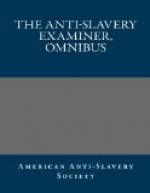A few months before this murder on the floor of the legislature, George Scott, Esq., formerly marshall of the state was shot in an affray at Van Buren, Crawford co., Arkansas, by a man named Walker; and Robert Carothers, in an affray in St. Francis co., shot William Rachel, just as Rachel was shooting at Carothers’ father. (National Intelligencer, May 8, 1837, and Little Rock Gazette, August 30, 1837.)
While Wilson’s trial was in progress, Mr. Gabriel Sibley was stabbed to the heart at a public dinner, in St. Francis co., Arkansas, by James W. Grant. (Arkansas Gazette, May 30, 1838.)
Hardly a week before this, the following occurred:
“On the 16th ult., an encounter took place at Little Rock, Ark., between David F. Douglass, a young man of 18 or 19, and Dr. Wm. C. Howell. A shot was exchanged between them at the distance of 8 or 10 feet with double-barrelled guns. The load of Douglass entered the left hip of Dr. Howell, and a buckshot from the gun of the latter struck a negro girl, 13 or 14 years of age, just below the pit of the stomach. Douglass then fired a second time and hit Howell in the left groin, penetrating the abdomen and bladder, and causing his death in four hours. The negro girl, at the last dates, was not dead, but no hopes were entertained of her recovery. Douglass was committed to await his trial at the April term of the Circuit Court.”—Louisville Journal.
The Little Rock Gazette of Oct. 24, says, “We are again called upon to record the cold blooded murder of a valuable citizen. On the 10th instant, Col. John Lasater, of Franklin co., was murdered by John W. Whitson, who deliberately shot him with a shot gun, loaded with a handful of rifle balls, six of which entered his body. He lived twelve hours after he was shot.
“Whitson is the son of William Whitson, who was unfortunately killed, about a year since, in a rencontre with Col. Lasater, (who was fully exonerated from all blame by a jury,) and, in revenge of his father’s death, committed this bloody deed.”




